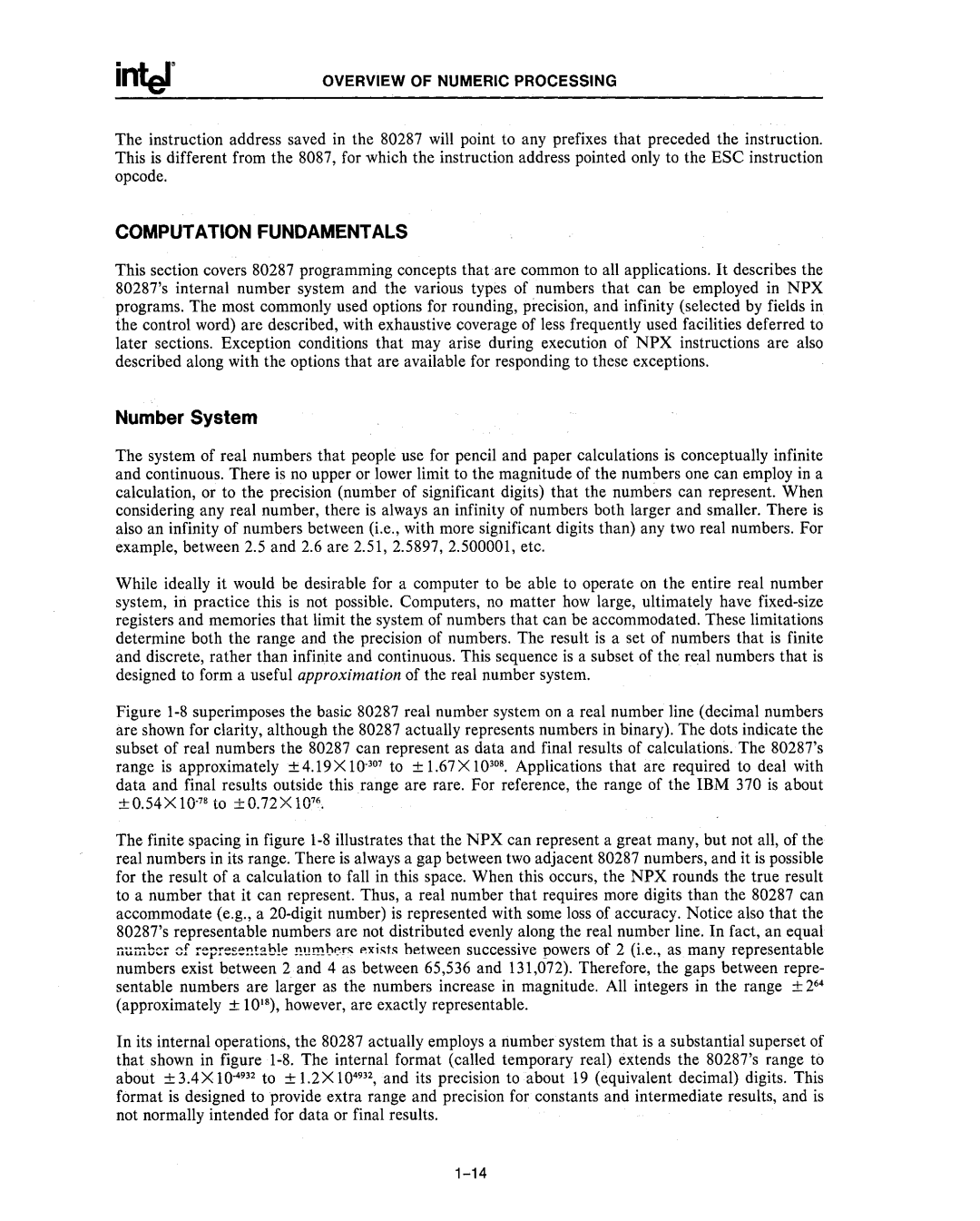
OVERVIEW OF NUMERIC PROCESSING
The instruction address saved in the 80287 will point to any prefixes that preceded the instruction. This is different from the 8087, for which the instruction address pointed only to the ESC instruction opcode.
COMPUTATION FUNDAMENTALS
This section covers 80287 programming concepts that are common to all applications. It describes the 80287's internal number system and the various types of numbers that can be employed in NPX programs. The most commonly used options for rounding, precision, and infinity (selected by fields in the control word) are described, with exhaustive coverage of less frequently used facilities deferred to later sections. Exception conditions that may arise during execution of NPX instructions are also described along with the options that are available for responding to these exceptions.
Number System
The system of real numbers that people use for pencil and paper calculations is conceptually infinite and continuous. There is no upper or lower limit to the magnitude of the numbers one can employ in a calculation, or to the precision (number of significant digits) that the numbers can represent. When considering any real number, there is always an infinity of numbers both larger and smaller. There is also an infinity of numbers between (i.e., with more significant digits than) any two real numbers. For example, between 2.5 and 2.6 are 2.51,2.5897,2.500001, etc.
While ideally it would be desirable for a computer to be able to operate on the entire real number system, in practice this is not possible. Computers, no matter how large, ultimately have
